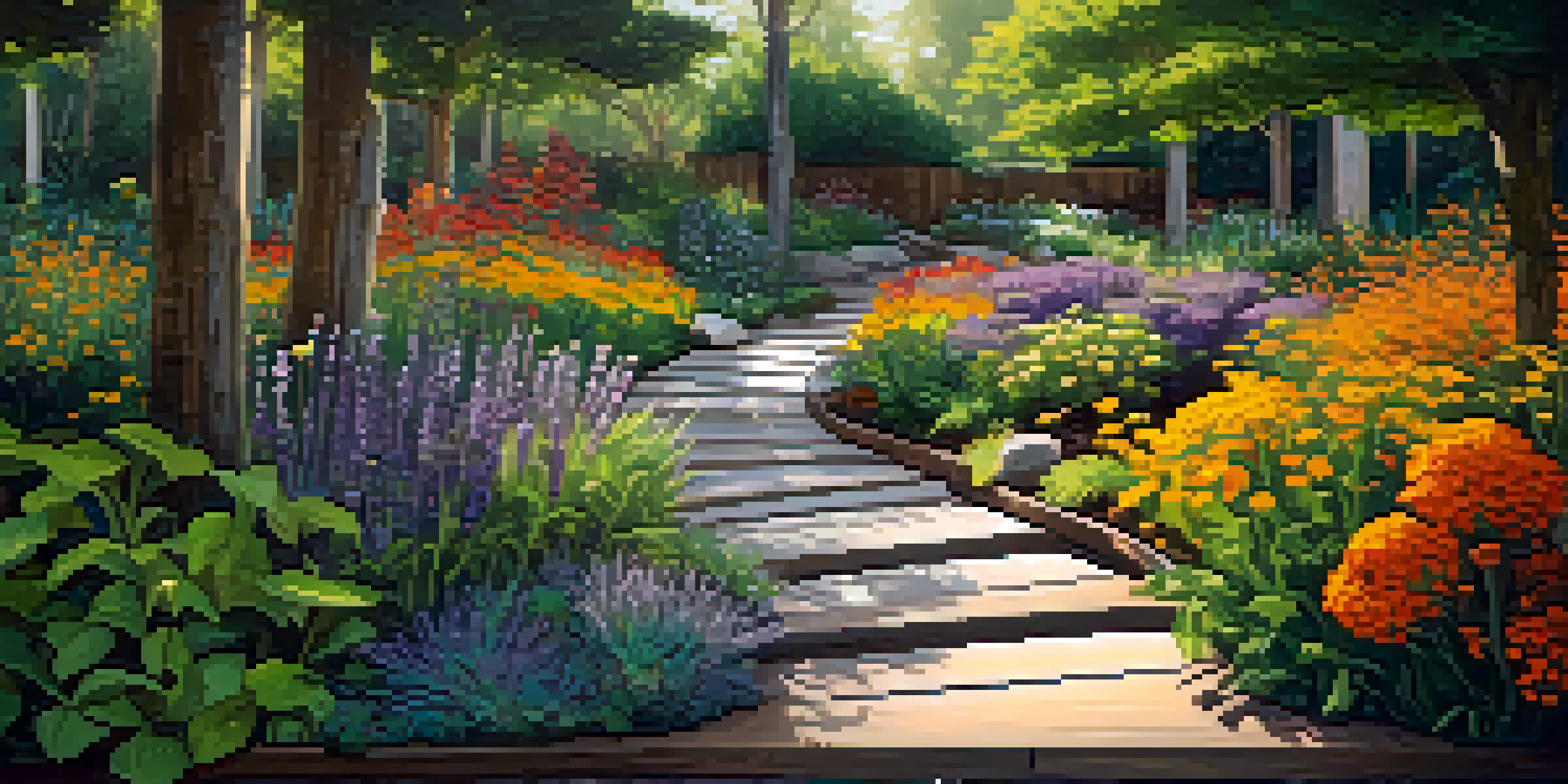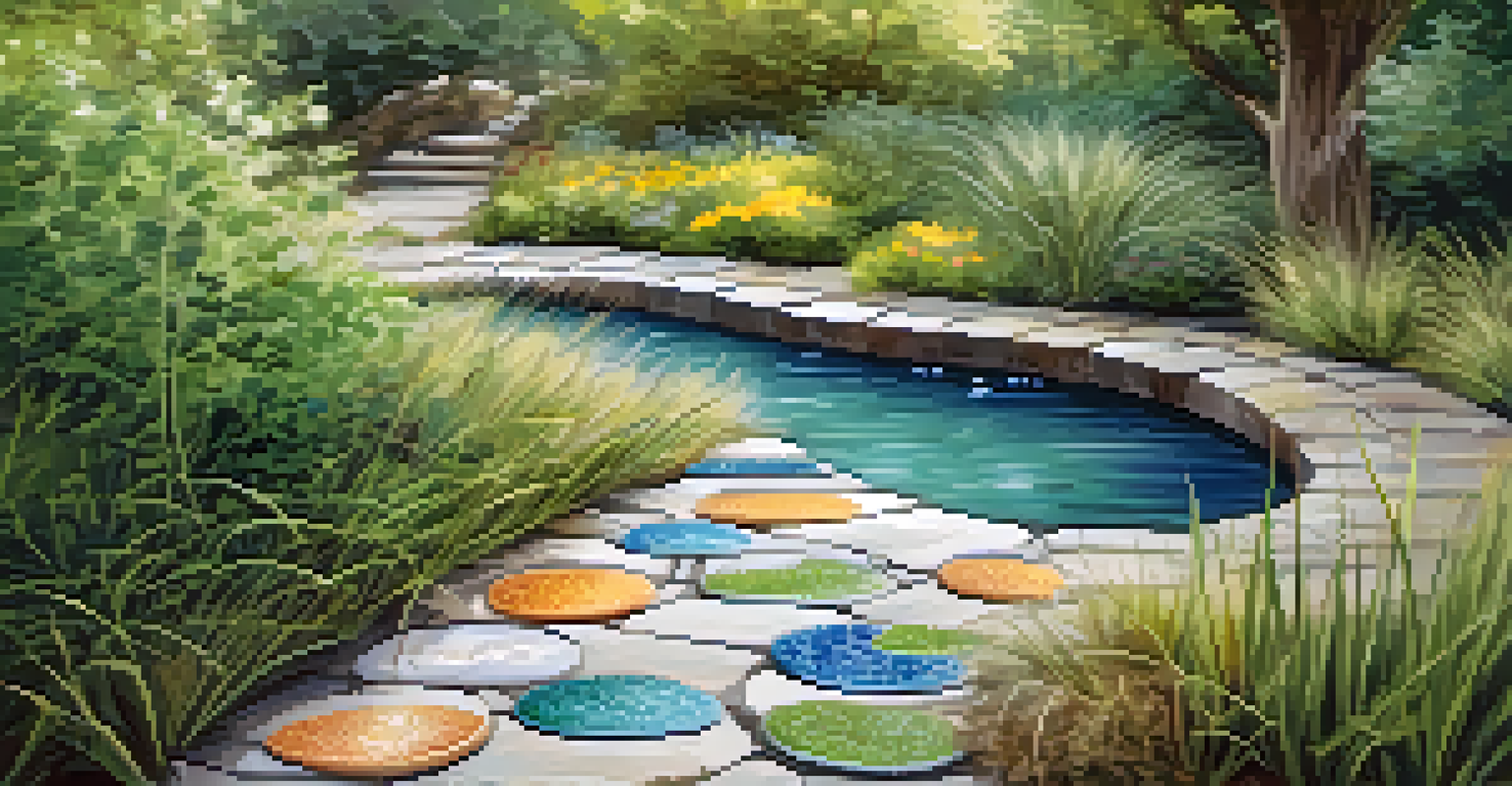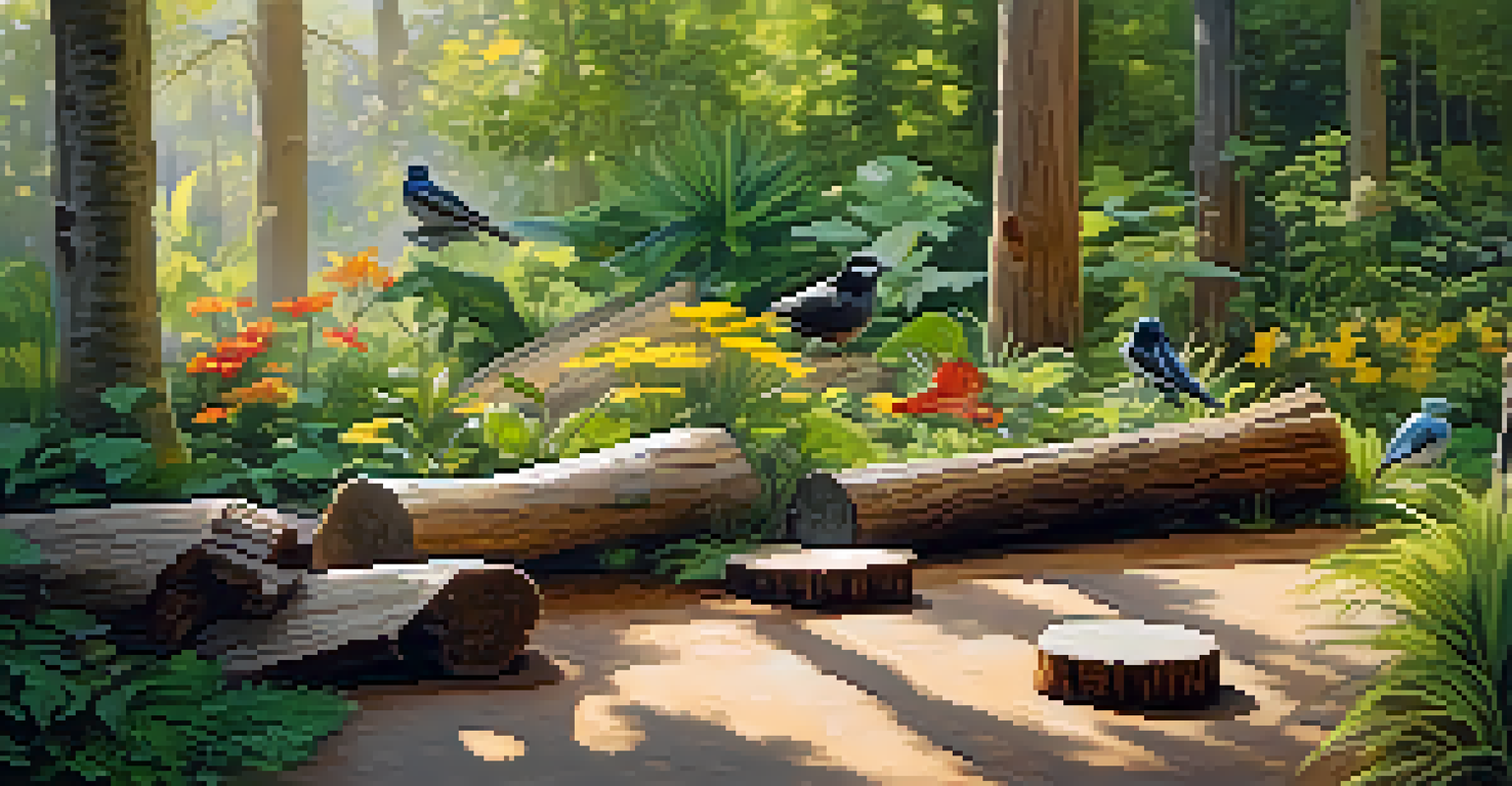Creating a Sensory Pathway in Your Sustainable Garden

Understanding Sensory Pathways and Their Benefits
A sensory pathway is a designated route designed to engage the five senses: sight, sound, touch, taste, and smell. These pathways encourage exploration and interaction with nature, making them perfect for gardens. Not only do they enhance the experience of being in a garden, but they also promote mindfulness and a deeper connection to the environment.
The best way to predict the future is to create it.
Creating a sensory pathway in your sustainable garden can help people of all ages, especially children, engage with nature in a playful way. By incorporating natural elements that stimulate the senses, you can transform a simple garden into a vibrant adventure. This is particularly beneficial in sustainable gardening, where the focus is on creating a harmonious relationship with nature.
Furthermore, sensory pathways can serve as educational tools, teaching visitors about different plants and their characteristics. For instance, including plants with distinct textures or fragrances can spark curiosity and foster a love for gardening. In essence, a sensory pathway is not just a route; it's an experience that enriches one's understanding of the natural world.
Choosing the Right Location for Your Pathway
The first step in creating a sensory pathway is to select an appropriate spot within your garden. Ideally, this location should be easily accessible and visible to encourage exploration. Look for areas where people naturally gravitate or where children often play, as these are prime spots for engagement.

Consider the natural flow of your garden when choosing a location. A pathway that weaves through various elements, such as flower beds or water features, will enhance the sensory experience. Additionally, think about the sun exposure, as different plants thrive under varying light conditions, affecting your sensory elements.
Remember to ensure that the pathway is inclusive and accessible for everyone. A winding path with different levels or materials can add interest while accommodating diverse abilities. This thoughtful approach will create a welcoming environment where all visitors can enjoy the sensory journey.
Selecting Plants for Sensory Engagement
Plants are the heart of any sensory pathway, and selecting the right ones is crucial. Choose a variety of plants that offer different textures, colors, and scents to engage the senses effectively. For example, soft lamb's ear can invite touch, while vibrant flowers like marigolds provide a visual feast.
Nature does not hurry, yet everything is accomplished.
Incorporating herbs can add another layer of engagement through taste and smell. Imagine brushing your fingers against a lavender plant and inhaling its calming aroma or plucking a mint leaf for a refreshing snack. This multi-sensory experience encourages interaction and fosters a deeper appreciation for plants.
Also, consider seasonal changes when selecting plants. A pathway filled with blooms in spring, lush greenery in summer, and colorful foliage in fall ensures continuous sensory engagement throughout the year. By planning for seasonal diversity, your sensory pathway will remain captivating and inviting no matter the time of year.
Incorporating Natural Materials for Texture
Texture plays a vital role in the sensory experience of your pathway, and using natural materials can enhance this aspect beautifully. Consider incorporating stones, gravel, mulch, or even wooden planks to create a tactile surface underfoot. These materials not only add visual interest but also invite visitors to engage with the path physically.
You can also use various materials to create different sections along the pathway. For example, a soft grass area can lead to a textured stone section, guiding visitors through a sensory journey. This variety keeps the experience exciting and encourages exploration.
Don't forget to include elements like logs or tree stumps, which can serve as natural seating or stepping stones. These features not only add to the aesthetics but also provide opportunities for interaction. By incorporating diverse textures, you create a rich, engaging environment that invites visitors to explore.
Creating Sound Elements in Your Pathway
Sound is another important sensory component that can be integrated into your pathway. Consider adding elements such as wind chimes, water features, or even rustling grasses to create a soothing soundscape. The gentle tinkling of chimes or the soft trickle of water can enhance the overall atmosphere of your garden.
You could also incorporate plants that attract birds or insects, providing natural sounds that change with the seasons. For example, a butterfly bush can draw in fluttering wings, while a bird feeder can invite chirping visitors. These sounds not only enhance the experience but also contribute to the ecosystem.
Creating designated quiet spots along the pathway allows visitors to pause and fully absorb the sounds of nature. These areas can serve as peaceful retreats where one can reflect or simply listen to the soothing sounds around them. By thoughtfully integrating sound elements, you can create a more immersive sensory experience.
Enhancing the Pathway with Art and Decor
Art and decor can add an exciting visual layer to your sensory pathway, making it even more engaging. Adding colorful sculptures, whimsical signs, or mosaic stepping stones invites visitors to explore and discover. These artistic touches can spark conversation and inspire creativity in those who experience the pathway.
Consider using local artists or eco-friendly materials when adding decor to ensure your garden remains sustainable. For example, upcycled materials can be transformed into stunning art pieces that tell a story. This not only supports the community but also reinforces your commitment to sustainability.
Incorporating seasonal artwork can further enhance the pathway’s allure. Think of festive decorations for different holidays or nature-inspired art that reflects the changing seasons. This dynamic aspect keeps the pathway fresh and inviting, encouraging repeat visits throughout the year.
Maintaining Your Sensory Pathway for Longevity
Creating a sensory pathway is just the beginning; maintenance is key to ensuring its longevity. Regularly check on plants, replacing any that may not thrive, and tidying up debris or weeds that can detract from the experience. A well-maintained pathway invites visitors to explore and enjoy the space.
Consider establishing a seasonal maintenance routine that includes pruning, mulching, and refreshing decor. This not only keeps the pathway looking its best but also allows you to reflect on what works and what could be improved. Engaging in this process can deepen your connection to the garden.

Lastly, invite feedback from visitors about their experiences. This input can provide valuable insights into how the pathway is being used and appreciated, allowing you to make adjustments that enhance its sensory offerings. By prioritizing maintenance, you ensure that your sensory pathway remains a cherished feature of your sustainable garden.